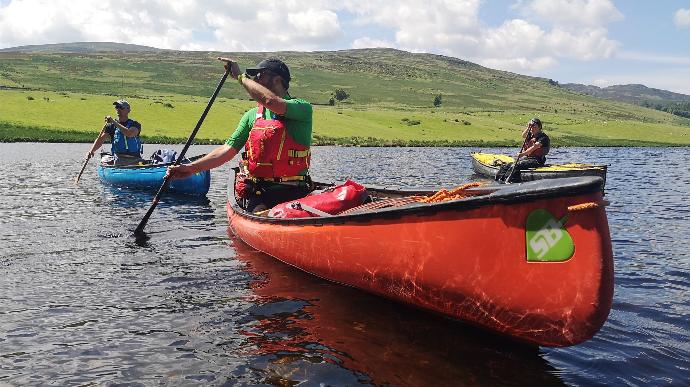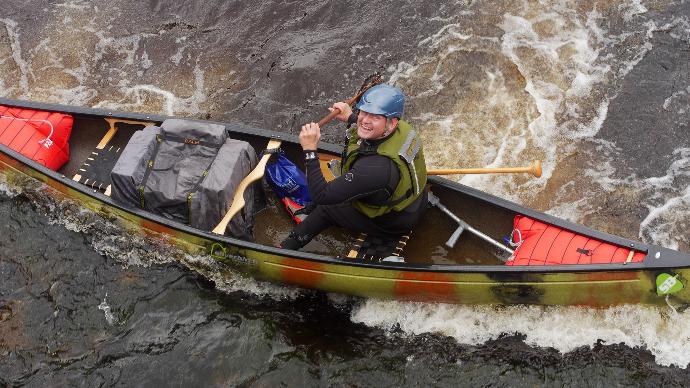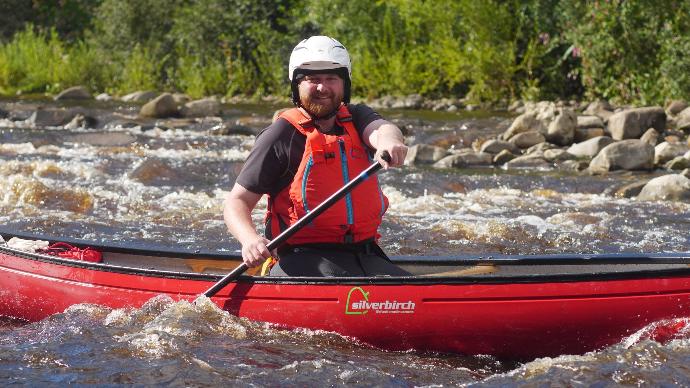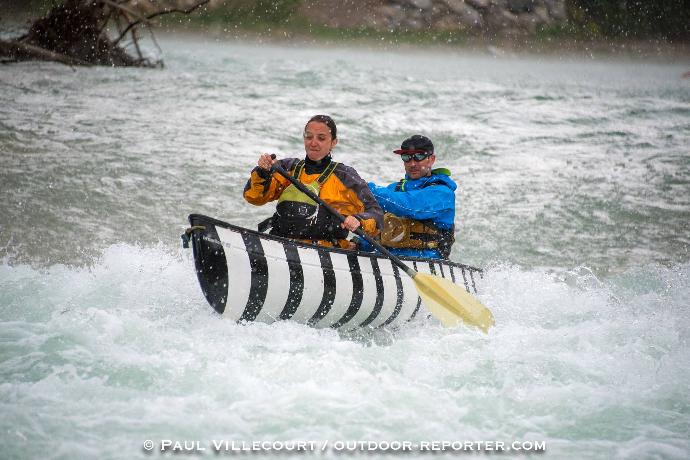If we're out for a quiet afternoon on a pond we might not even have any kit in our boat. When we do have many bits-and-bobs to carry, we might be happy with it all lying around, loose. At other times, we may balance three different approaches in a single boat!
HOW MIGHT WE CARRY GEAR?
Having kit in a canoe might evoke visions of a tidy boat with a neat portage-pack, all set up for fast-and clean launching and landing and a one-carry portaging… or even of kit lashed so securely it's like part of the boat…
…but at the casual extreme, we might be carrying a range of loose items, from a flask, drinks bottle and snack box to a camera and tripod. If we've also got a loose spare paddle and throwline and kneeling mat, life's getting messier.
In this blog, we consider options for managing our kit, and why (or when) we might we choose one way over another.

For context, this blog should be read alongside our Outfitting a Canoe for Touring and Open Water and Outfitting a Canoe for Rivers and White Water blogs.
CAUTION: any approach to carrying kit can create entrapment hazards, whether because loose or leashed kit can move around or because our lashed system means we can't easily move something out of the way. Testing our solutions in a controlled environment can make sense!

LOOSE KIT: PACKS, BARRELS, ETC.
Consolidating kit into packs, barrels, thwart bags, PFD pockets and so on can make a huge difference to our canoeing experience.
Anything that keeps our stuff together so that it's easy to handle is going to make launching and landing a lot more straightforward... and the benefits are even greater if we're ever keeping track of our bits and bobs after a capsize.
Can keeping things loose work everywhere? It certainly can, and some will always prefer that option - but every approach has limitations!
In practice, even well-consolidated loose gear can become problematic. Aside from risks of it moving around, if it gets away from us in the event of a capsize, we can lose aids to self rescue… and attempting to collect floating kit after a rescue can introduce avoidable risks, especially in wind, waves or strong currents.
Unless we are really sure of what we are doing, any risks to ourselves are likely to be minimised by carrying loose kit that has been consolidated into as few containers as possible - but that might risk losing what we're carrying, and can even make self-rescue harder.
LEASHED KIT: SECURED TO THE CANOE
Leashing is a natural next step for making sure our kit is easy to track down if in the event of a capsize, especially if we have a long-winded rescue situation.
Leashing keeps our stuff from getting mislaid whilst we sort ourselves out (or whilst someone helps us out). If our leashing is done right, our bags will be bobbing slightly apart from our canoe, making the canoe easier to manhandle.
By adjusting a leash, we can perhaps set our consolidated kit as a "counterweight" in an open-water (or deep-water) self-rescue situation.

Do leashed solutions comes with downsides? Yes! For starters, leashing only makes sense if we've already consolidated our kit, otherwise we end up clipping each item individually. Beyond that, even leashing consolidated kit takes time to set up and can increase the faff at every portage!
CAUTION: even the best-prepared leash adds an entrapment risk. On slow moving rivers and open water, the increased risk might be minimal, but in most white-water environments, most of us will prefer either loose kit (above) or a lashed-in kit (below).

LASHED KIT: SECURED IN THE CANOE
If you've ever capsized in a bad rapid with a load of camping gear aboard, you know the value of tying in packs. Tightly-secured packs act like a giant life preserver when the canoe dives in currents.
Like flotation blocks, kit that is securely lashed in becomes part of our canoe.
Lashing kit down takes our solutions to a whole new level. Sometimes, the idea is simply to ensure the kit doesn't become a hazard to the canoeist. At other times, we might be thinking that every bit of lashed in kit will help if our canoe is ever swamped with water. The downside? Our canoe can end up too heavy to rescue.
Lashing our kit into our canoe can (and ideally, should) be compatible with Clean Line and Clean Boat principles. These are about minimising or eliminating entrapment hazards, including from anything which protrudes beyond the gunwales before, during or following a capsize.


Lashed, Leashed or Loose?